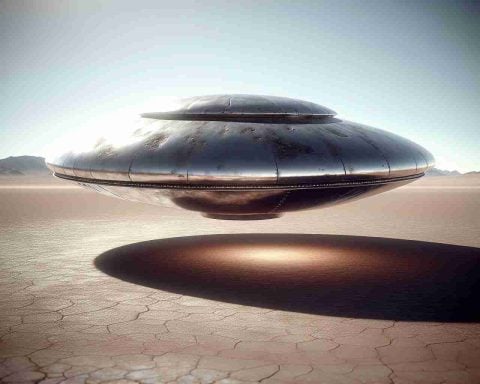Light Pollution vs. Space Exploration: Is There a Solution?
In the picturesque town of Flagstaff, Arizona, stringent laws exist to minimize light pollution and protect the clarity of the night sky, which is essential for astronomical research. However, alarming trends show that the rapid deployment of satellites may jeopardize these efforts.
At the Lowell Observatory, executive director Amanda Bosh emphasizes the importance of unobstructed skies for studying the cosmos. With over 10,000 satellites currently orbiting the Earth—nearly 6,500 of which belong to Elon Musk’s Starlink project—the challenges for astronomers are becoming increasingly significant.
Researchers face a dilemma: when capturing images of celestial bodies, the presence of satellites can mar the results, leaving distracting streaks across their observations. Bosh notes that hours of meticulous work can be rendered ineffective if a satellite crosses their field of view.
Despite the hurdles, Bosh highlights the dual nature of these satellites. While Starlink enhances internet accessibility in remote areas and showcases human innovation, it also poses a threat to astronomical research. The projections are daunting; experts estimate that by 2030, over 100,000 satellites could be in orbit.
To thrive in this new era, Bosh suggests a balanced approach—limiting satellite numbers or regulating the design of solar panels that contribute to light reflection. The quest for coexistence between technology and astronomy is crucial for preserving the wonders of the universe.
The Battle for the Night Sky: Finding Harmony Between Satellites and Astronomy
Light Pollution vs. Space Exploration: Is There a Solution?
As technology progresses rapidly and more satellites are launched into orbit, the debate over light pollution and its impact on astronomy intensifies. The picturesque town of Flagstaff, Arizona, serves as a beacon for astronomical research due to its commitment to minimizing light pollution through rigorous policies. Yet, the quickening pace of satellite deployment threatens to undermine these protective measures.
# Current Trends in Satellite Deployment
Currently, there are over 10,000 satellites in orbit, with approximately 6,500 attributed to Elon Musk’s Starlink initiative alone. The influx of these satellites is not just a technological advancement; it presents legitimate concerns to astronomers like Amanda Bosh, executive director of the Lowell Observatory. When capturing images of celestial bodies, satellites often leave streaks that mar observations, effectively compromising hours of work in a fleeting moment. The implications extend beyond mere inconvenience; researchers are witnessing a tangible decline in the quality of astronomical data.
# The Dual Nature of Satellites: Connectivity vs. Clarity
The benefits provided by satellite technology, particularly in enhancing internet access in underserved areas, cannot be overlooked. This duality underpins the ongoing discussion about how to balance innovation with the preservation of our night sky. Indeed, as connectivity increases, so does the potential for light pollution and visual obstructions from numerous satellites.
# Future Projections and Their Implications
Experts project that by 2030, the number of satellites in orbit could exceed 100,000. Such an exponential increase poses serious questions about the sustainability of astronomical research as we know it. The risk of losing pristine observational opportunities to satellite interference is a reality that astronomers must contend with.
# Strategies for Coexistence: Regulation and Design
To mitigate these issues, Bosh advocates for a balanced approach involving both the limitation of satellite numbers and the regulation of satellite designs—particularly regarding solar panel configurations that contribute to light reflectivity. Innovations in satellite technology could potentially incorporate materials that minimize their visibility to optical telescopes, helping to preserve astronomical integrity.
# The Path Forward: Collaboration and Innovation
Successfully integrating technological advancements with the field of astronomy will require collaborative efforts among scientists, policymakers, and satellite companies. Creating sustainable policies and encouraging innovations that address light pollution are essential for fostering a harmonious relationship between these two worlds.
# Insights and Predictions
As we move forward, it’s important to understand the broader implications of our technological pursuits. The progression of satellite technology could usher in a new era of connectivity for humanity, but this must not come at the cost of our ability to explore and understand the cosmos.
The discussion surrounding light pollution and space exploration will remain a pertinent topic in the coming years. By taking proactive steps, we can ensure that the wonders of the night sky remain accessible for both current and future generations of astronomers and stargazers alike.
For more insights on astronomical research and technological advancements, visit NASA’s official page.



















